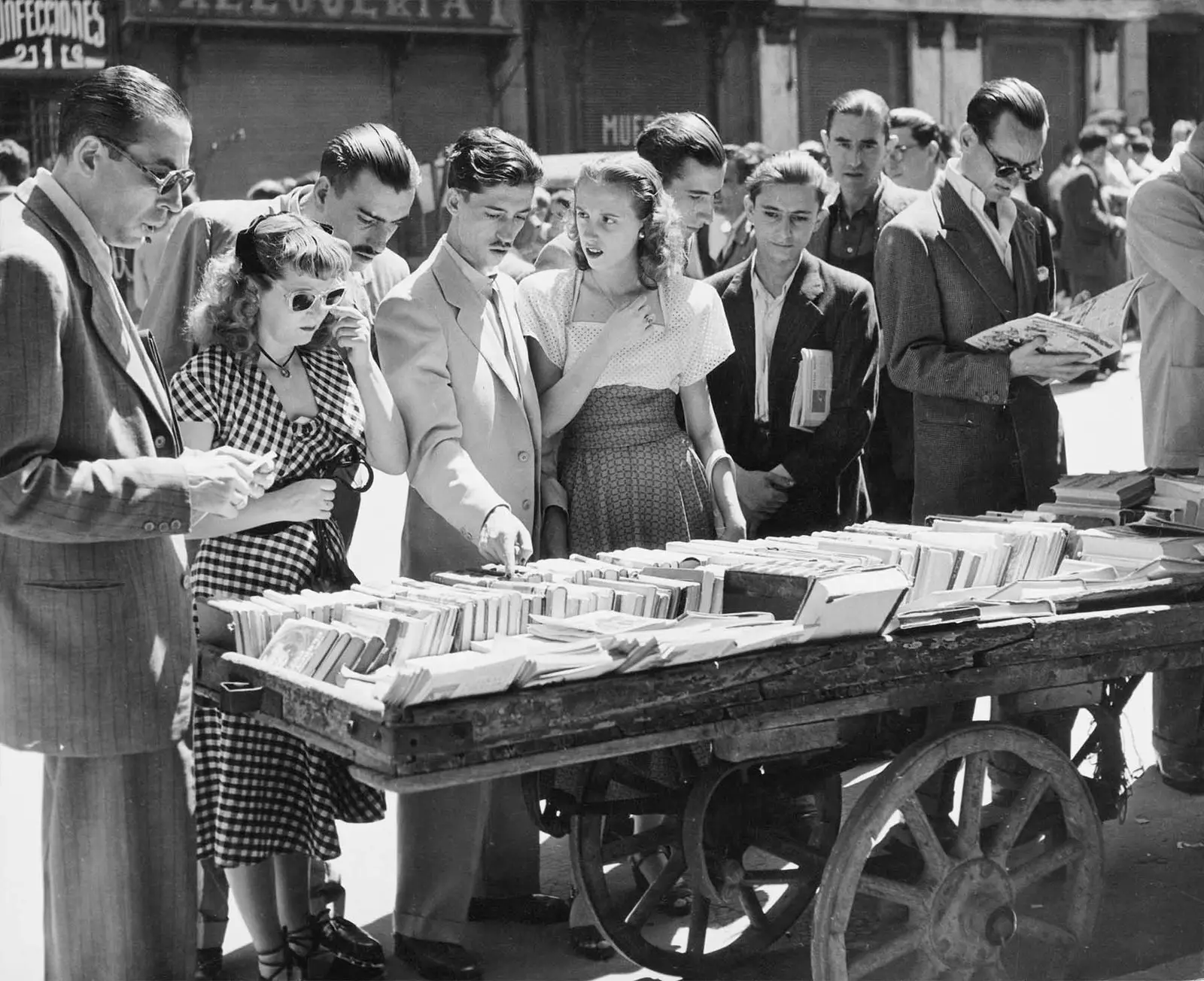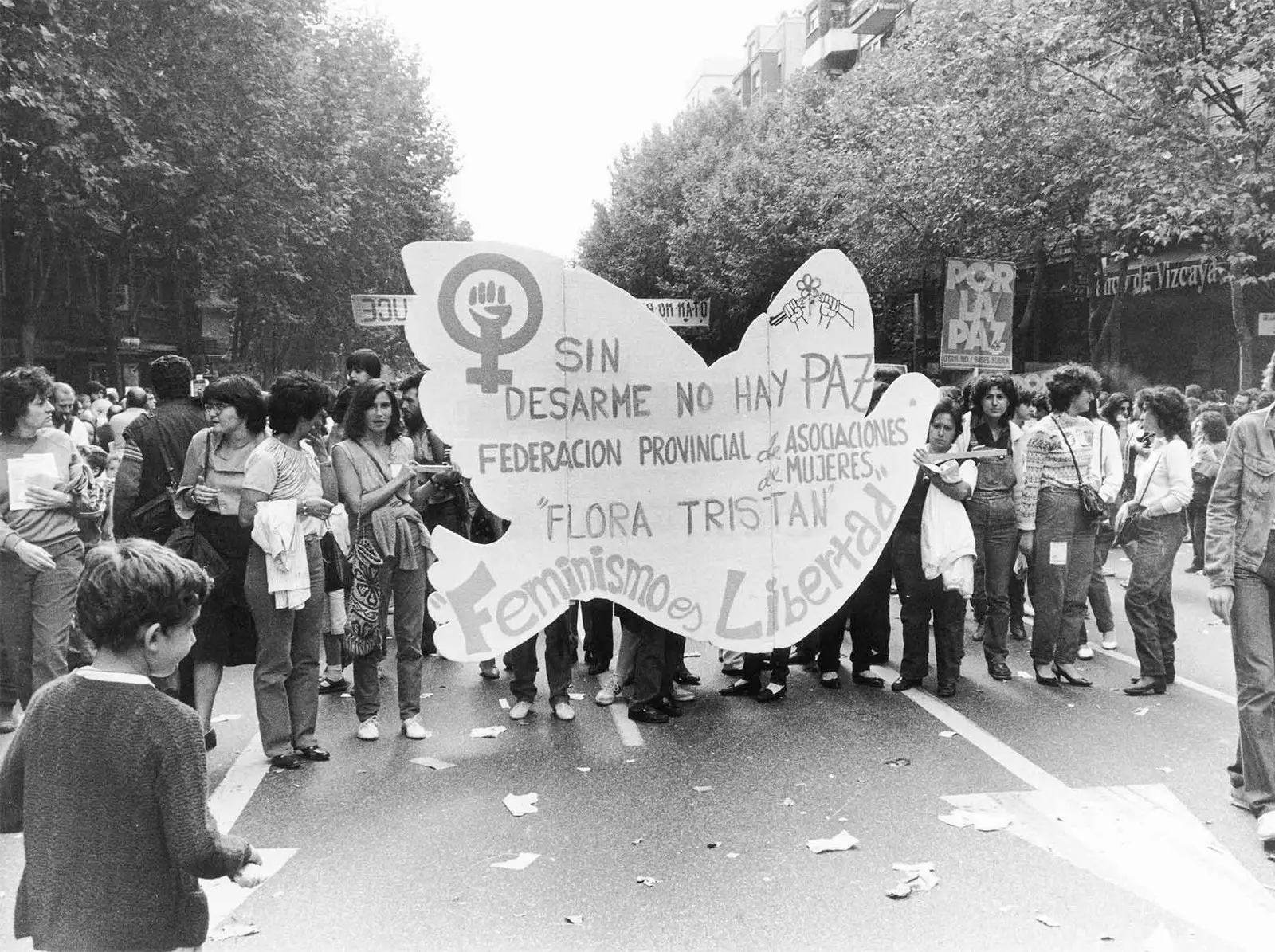
Buyers in the Rastro de Madrid, in 1950
Stroll the streets with a feminist look. That is the challenge that they throw at us historical , the platform that aims to make known how and where the women of our cities lived. At the moment, their tours can be done in ** Madrid and Granada **, the places where they reside Marta Casquero, Sara Lopez and Mariela Maitane, their managers. They also organize them in **London**, when the weather allows them to cross the English Channel.
Everything arose in this last place. Marta, Sara and Mariela set out to make the visit that they would have liked to have prepared for them. In this way, his first walk through the city of the Thames was born, In search of the suffragettes , a route that claims and reveals a hidden face of the English capital. And, probably one of the most complete itineraries on the experiences of the first suffragettes.
"Not only do we look at the central figures -explains Marta-, but we also try to give a class and race perspective ”. Thus, they build an approach that encompasses tangential figures within the movement, such as the Indian, Jewish and lesbian women.
That first walk was very popular, so much so that even they keep doing it . However, the true history of Herstóricas begins in our capital. “When we got back, we realized that what London lacked, it also needed. Madrid Sarah recounts historian and educator. With that idea, they made a complete documentation work , while in Grenade , her soulmate, Mariela, undertook a similar task.
“We were documenting ourselves during the five months prior to the launch of Herstóricas”, highlights Marta. This work allowed them to identify certain shortcomings, among them, the excessive use of proper names and the null representation of the anonymous women who inhabited the streets. “We decided to start with women like us. Go through and see those common places”, indicates Sara.
This is how the tours organized so far arise: In search of Madrid Y Les Bis in Madrid , two plans they are having great acceptance , and that allow to enter in another facet of the city , that of the spaces and the invisible women who, as they remind us, are still off the official routes . Both give the example of memorial plaques that decorate certain walls. “Of the more than three hundred that are placed, only about thirty belong to women ”, they lament.
To these first walks they have added visits to the Prado Museum (under names like Art and sexist violence , Rethinking women in art Y Sexualities in the Prado ) and workshops (such as history in sport , Historical in education , The Historical of the month either They also contributed ) .

Women demanding nuclear disarmament (Madrid, 1983)
THE WOMEN'S SPACES IN MADRID
This necessary perspective leads us to ask you to invite us to discover the city with them. They do it by teaching us the history behind those places we have ahead of us and that we are not able to recognize as female spaces:
**La Cebada Market (Plaza de la Cebada s/n) **
"Women have always been in the markets and in the squares, but it has been considered extrapolation of the domestic . It is not until the end of the 19th century that women begin to have a paid job. It's the moment when occupy some factories or they can be seen as shop assistants.”
**Room of Mayors of House and Courts (Plaza de la Provincia, 1)**
“It was an institution that had control over all public activities that took place in the streets from Madrid. That was where they all ended the complaints of those women who, for wanting work in an illegal workshop, they were accused by the different guilds. Trials were also held there, and was condemned many of those women. Currently, it is the Ministry of Foreign Affairs.”
** Tobacco (Ambassadors Street, 53) **
"The group of the liminal (another group that also carries out extraordinary critical tours of the city) has a tour very focused on the old Tobacco Factory next to Embajadores. we just do one stop , which helps us to talk about the workers and make it known as a common space”.
**The Women's Lyceum Club (Plaza del Rey, 1) **
"He's finally having the due recognition. It is a club that was created in 1926 from the hand of 115 upper class partners. Most of them were linked to university world and belonged to the Ladies Residence. To access it you had to have a higher education or be related to the social world. It was something classy, but it was one of the places where the debate around the female suffrage. They became more than 500 associates, among which we can find figures such as Clara Campoamor, Victoria Kent or Maria Maeztu ”.
**Telefonica (Gran Vía, 28) **
“The workers who began to perform jobs of telephone operators They were the most open. His work has been given a romantic aura; we must think about paternalism of a company full of men. It was not a very long period, perhaps 30 or 40 years , but it did normalize their presence. Telephone He has a nice file on them, and he should release it."
**Library Women (Calle San Cristobal, 17) **
"The women's bookstores They emerge as spaces for meeting and conversation, where knowledge can be shared. They are important places clandestine debates . Recently, the women's library of ** Marisa Mediavilla has been in the news for not having a fixed location.** She is an example of perseverance, a work of little ant Totally necessary. She also tells us a lot about how little valued files are and female culture.
